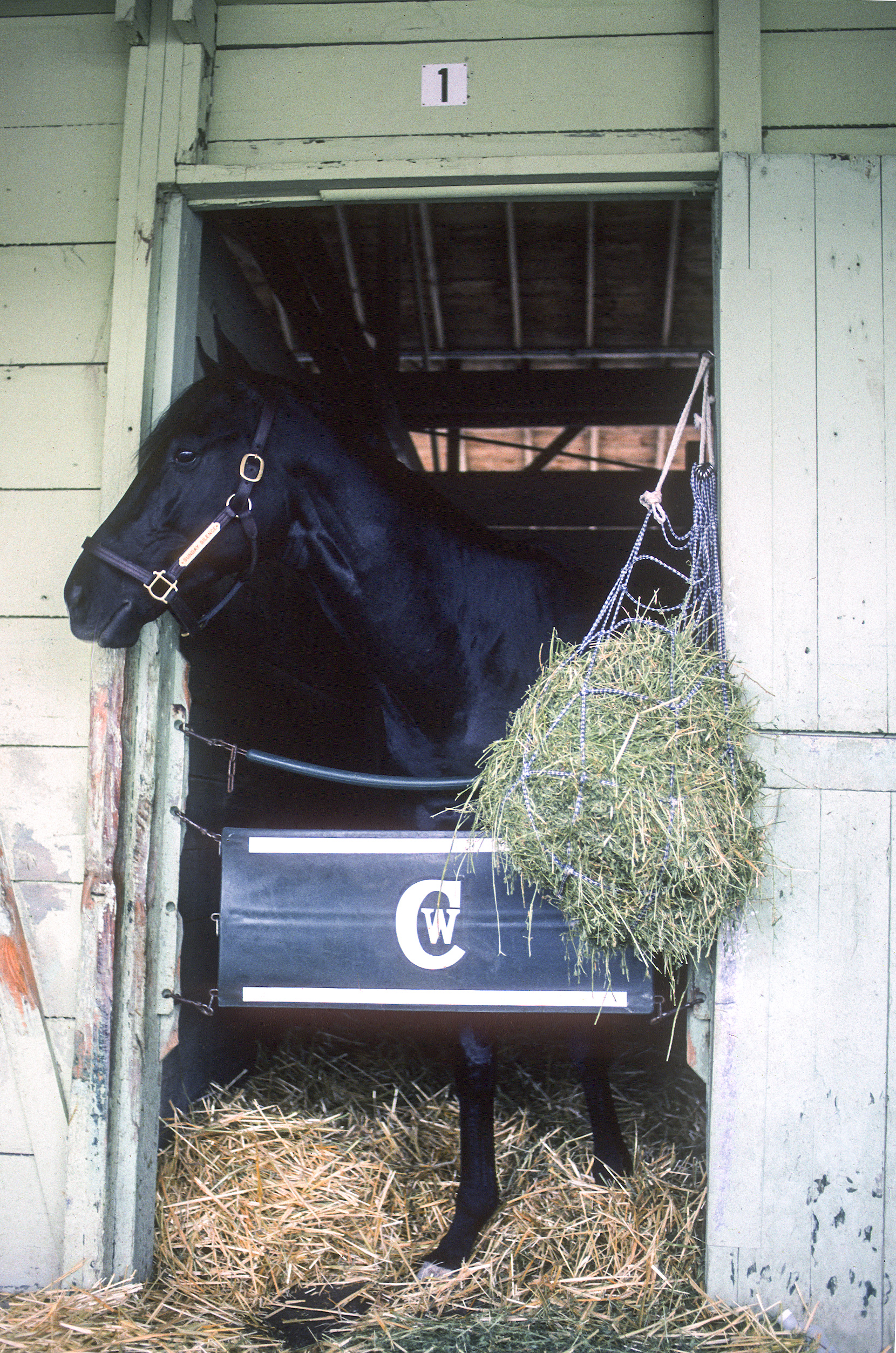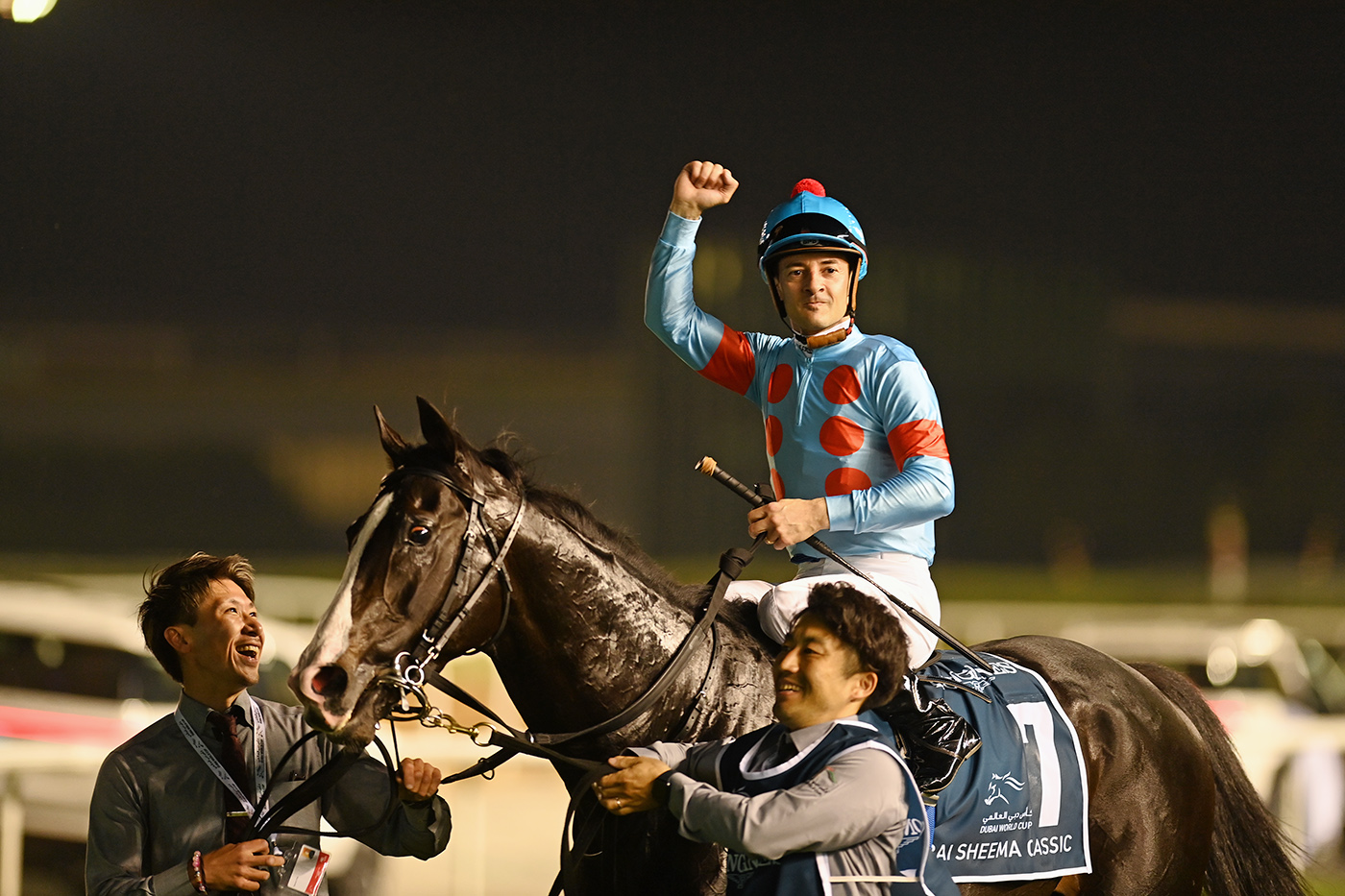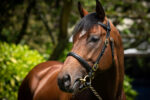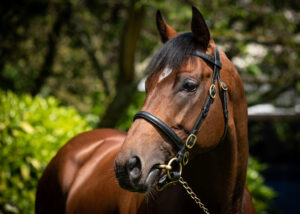While there has long been a steady level of respect targeted towards the Japanese Thoroughbred, it has undoubtedly been brought into sharper focus this season. Auguste Rodin, from the final small crop of Deep Impact, has done his bit in this part of the world for Coolmore to place an exclamation point on the remarkable stud career of his sire. Yet even he is unable to garner the attention received by the outstanding Japanese runner Equinox, whose electric performances this season under the eye of Tetsuya Kimura has captured the imagination of racing fans all over the world.
From October 2022 to November 2023, Equinox remained unbeaten in six starts in Group 1 company. That is impressive in itself but it was the manner with which he dispatched his challengers with such ruthless efficiency that places him in rarefied air. Seemingly easy to ride, he would settle well for Christophe Lemaire yet there was an invariably an immediate change of gear available as well. And once he was in full flight, there was literally no stopping him. His treatment of the likes of Westover, Mostahdaf and Shahryar in the Group 1 Dubai Sheema Classic back in March illustrated as much yet it was still eye-opening to see him exert the same authority over Japanese stars Liberty Island, Stars On Earth and Do Deuce in the Group 1 Japan Cup in November; having been the only one capable of initially swallowing up the leader Panthalassa, another Group 1 winner who had set a fierce pace in front, Equinox’s turn of foot propelled him so far in front of the pack that Lemaire was able to ease him down well before the line. At the finish, he still had four lengths to spare over this season’s Japanese Fillies Triple Crown heroine Liberty Island.
Equinox retires to stud at the Shadai Stallion Station as the world’s best horse by ratings (Timeform have him on 136, three pounds ahead of Ace Impact). It is tempting to regard the colt as the culmination of years of ambition behind the development of Japan as a racing nation. And indeed, it has taken decades of cultivation, foresight and determination by various players within the country’s industry, encompassing numerous acquisitions of stallions and broodmares alongside an increased understanding of management and training. Like any endeavour, there have been bumps in the road – there were some terrible disappointments within the clutch of Epsom Derby winners imported during the 1990’s – but had those involved adopted a tentative approach to improving the breed, then perhaps a horse like Sunday Silence would never have been the subject of their ambition
In a recent feature with Trainer magazine, Sunday Silence’s owner-breeder Arthur Hancock recalled the efforts made behind trying to stand the horse at his Stone Farm in Kentucky. The 1989 season had been lit up by the near-black colt’s battles with Easy Goer, a rivalry which had gone his way in the Kentucky Derby, Preakness Stakes and Breeders’ Cup Classic. Yet despite that incredibly accomplished record, there were few takers when it came to standing him at stud.
“It became apparent very quickly that people wouldn’t use him.
“We tried to syndicate him and called people everywhere – Kentucky, England, France and the answer was always the same,” recalled Hancock in Trainer. “It became apparent very quickly that people wouldn’t use him.
“It was spread around the industry that he was a fluke, another Seabiscuit or Citation who could run but that would be no good at stud. It was said that he was crooked, which he wasn’t, and that he was sickle hocked, which he was as a young horse but grew out of. He was an ugly duckling that grew into a swan.
“We had three people on the books to take shares and two that would send mares. Then I spoke to my brother Seth at Claiborne and he had 40 contracts to send out for Easy Goer.
“At the same time, I got a call from a representative of Teruya Yoshida saying that Shadai would be interested in buying the whole horse. They were offering $250,000 per share.
“At the end of the day, I had two contracts and three shares sold. The day he left, I loaded him up myself and I don’t mind admitting that when that van went down the drive, I cried.
“Basically the Japanese outsmarted everybody.”
Sunday Silence had been a $17,000 yearling and by all accounts, was certainly no oil painting. But he was a tough horse both physically and mentally. There are numerous references to his bad behaviour in training, a fire that was inherited from Halo and certainly transmitted in varying degrees to a number of his stock. However, if channelled correctly that kind of mental toughness tends to stand the line in very good stead when it comes to the rigours of racing.

Sunday Silence pictured the morning after his Breeders’ Cup Classic win. He would go on to change the face of Japanese breeding. Photo – George Selwyn
Japan owes so much to Sunday Silence to the extent that it is estimated that its over 70 per cent current broodmare population there contains his blood in some form. Not only did his success help strengthen the hand of the Yoshida family considerably, it also showcased the Japanese breed to a wider global audience. Japan was something of a closed shop before Sunday Silence’s achievements became too great for some of the larger breeders in Europe and North America to ignore – Sheikh Mohammed, the Wertheimer brothers and Niarchos family were among those to use the horse early on and with great success. Thus, by the time his champion son Deep Impact retired to stud, a precedent had been set; in return, his progeny have been regular sights outside of Japan. The Wildenstein family’s Poule d’Essai des Pouliches winner Beauty Parlour, a member of his second crop, set the ball rolling in that respect. Coolmore weren’t far behind in their support, which yielded the Classic winners Saxon Warrior, Snowfall, Fantasy Blue and Auguste Rodin, while for the Niarchos family, he sired their Prix du Jockey Club winner Study Of Man.
Equinox is very much in that Sunday Silence mould
Equinox is very much in that Sunday Silence mould as an angular, leggy, dark-coloured and blaze-faced colt. However, he belongs to the tribe not through Deep Impact but his brother Black Tide. Both are out of Wind In Her Hair, a daughter of Alzao trained by John Hills to run second to Balanchine in the 1994 Oaks and who is still going strong at 32-years-old as a pensioner at the Northern Horse Park.
Black Tide, who bears a particularly close physical resemblance to Sunday Silence, was nowhere near as talented as Deep Impact, winning three of 22 starts over the course of six seasons headed by a Listed event over 1,800 metres. Presumably his pedigree was a key factor in his early popularity with breeders that featured six-figure books in each of his first nine seasons, notably when covering 194 mares in 2015. In return, he has had his moments at stud as the sire of 11 stakes winners. Now 22-years-old, he stood this season for 1,500,000yen (£9,300) at his long-term home of the Breeders’ Stallion Station in Japan.
Kitasan Black is by far his best performer sired to date. A hugely admirable horse who was Japan’s Horse of the Year and a two-time Champion older male, he was a typically tough Japanese product who won 12 of his 20 starts highlighted by the Kyoto Kikuka Sho at three, Japan Cup and Tenno Sho at four, and the Arima Kinen, Osaka Hai, Tenno Sho (Spring) and Tenno Sho (Autumn) at five. He was retired to stand at the Shadai Stallion Station in 2018.
Kitasan Black’s first three crops number 84, 82 and 55 foals, which are surprisingly low for such a talented and good-looking horse. But Shadai have afforded him with enough quality to do well if capable, sending him the likes of Group 1-winning producers such as Donna Blini (resulting colt sold for $1,454,546) and Malacostumbrada (colt sold for $1,775,701) in addition to July Cup heroine Fleeting Spirit (colt sold for $1,028,038).
Equinox is from his first crop while his second contains another top colt in Sol Oriens, successful in this year’s Group 1 Satsuma Sho (Japanese 2,000 Guineas), as well as the ill-fated Group 2 winner Skilfing, a highly promising colt who sadly died in this year’s Japanese Derby. Fellow three-year-old Ravel also ran fourth in the Yushun Himba, otherwise known as the Japanese Oaks.
In light of his early success, the Shadai Stallion Station raised his fee from 4,000,000yen (£25,000) to 10,000,000yen (£62,500) for 2023 and that has been increased again for next season to 20,000,000yen (£110,000).
Equinox is the highest price ever afforded to a first-year Japanese stallion
That figure made him the most expensive stallion to stand in Japan until the announcement arrived that Equinox had been retired to take his place in the same stallion barn as his sire. Shadai have also installed him at 20,000,000 yen, which is the highest price ever afforded to a first-year Japanese stallion.
Equinox belongs to a family that has been in Japan since 1988 when Patrick Barbe paid $410,000 for his fourth dam Blanche Reine, a winning Nureyev half-sister to French Group 3 winner Bellypha (later grandsire of Linamix) as a six-year-old in foal to Alleged at the 1988 Keeneland November Sale. Blanche Reine left behind the Group 1 Prix Jean Prat runner-up Balleroy on the ground in France and although he turned out to be the best of her eight winners, the Alleged foal she was carrying at the time of her purchase was the stakes-placed Maison Blanche, the third dam of Equinox. In turn, Maison Blanche foaled five minor winners including Blancherie to the Arc hero Tony Bin, a high-class sire for Yoshida in Japan who is probably best known today in his role as the damsire of top stallion Heart’s Cry. It was this daughter Blancherie who went on to produce Chateau Blanche, winner of the Group 3 Hanshin Mermaid Stakes and now today celebrated as the dam of Equinox.
Chateau Blanche is a daughter of the Group 1 Takamatsunomiya Kinen winner King Halo, a name that probably means little over here until it is factored in that he is a son of Dancing Brave, that brilliant performer of 1986 whose sale to Japan in the early 90s was swiftly followed by the 1993 Classic successes of Commander In Chief, White Muzzle and Wemyss Bight. Interestingly, inbreeding to Dancing Brave’s sire Lyphard is found in the background of seven of Deep Impact’s Group 1 winners, including Gentildonna, Deep Brillante and Glory Vase. As for Kitasan Black, he is also inbred to the diminutive son of Northern Dancer and adding another line has clearly done no harm in the case of Equinox, who is also inbred 4×4 to Sunday Silence’s sire Halo.
It takes a depth of ambition, planning and financial resources for breeders in this part of the world to use Japanese stallions. While a true global appreciation of the Japanese thoroughbred probably arrived too late to really impact Sunday Silence, Deep Impact certainly made the most of those international opportunities. Here’s hoping that a number of European breeders take the plunge again and support Equinox.

Equinox retires to the Shadai Stallion Station as the most expensive first-year stallion in Japanese history. Photo – Bill Selwyn



